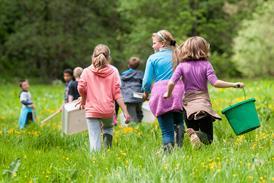
The Charterhouse, located in Clerkenwell, is an assembly of historic buildings dating from the 14th century; and from January 2017, educational workshops will be available for Key Stage 1 to 3 pupils.
Since being built in 1348, the Charterhouse has been a religious site, a Tudor mansion, a school and an alms-house (a site of charity-run accommodation). It remains an alms-house today.
The site’s history presents a number of opportunities to engage young people with the history of London and the nation, as well as link to subjects such as Art, Design and Technology, Archaeology and Architecture.
The story of the Charterhouse has been shaped by key national events such as the Black Death, Henry VIII’s dissolution of the monasteries, the Civil War and World War Two, all of which can be linked to History studies.
The Charterhouse has also hosted an array of people who have shaped the history of England, many of whom feature in National Curriculum modules.
Over the last 400 years the site has been governed by a list of people including Oliver Cromwell and his son Thomas, John Donne, Judge Jeffries, the first Duke of Wellington, Robert Walpole, Benjamin Disraeli, Robert Peel and Stanley Baldwin.
Elizabeth I also stayed at the Charterhouse in November 1558 immediately after her accession to the throne.
In addition, in its days as a school, the Charterhouse was a home to pupils including John Wesley, William Makepeace Thackeray, Henry Havelock and Robert Baden-Powell.
The core of the Charterhouse’s learning programme will be study days and facilitated sessions for Key Stage 1, 2 and 3 students.
Each session can be linked to the history of the buildings, and the events that took place there. Guided tours for schools will also be available.
For higher education audiences, lectures, seminars with guest speakers, tours and creative workshops will be organised through partnerships with colleges and universities in a number of subject areas.
For further information visit www.thecharterhouse.org.









